Meet Christine Carli, artist, designer, Art Academy of Cincinnati (AAC) Alum, and now AAC Board President! Carli currently works as an independent communications specialist, combining her design skills with her love of writing to create meaningful online content, speeches, and corporate communications. Formerly, she worked as the Director of Communications for ArtWorks. The Art Academy has played an integral role in her career path from the very beginning.
She landed her first job in book marketing at F&W Publications based on the skills she learned from the Art Academy’s Community Education classes. She later enrolled full-time at the Art Academy to earn a Bachelor of Arts Degree in Visual Communication Design (2008). She also holds a Bachelor’s Degree in Media Arts with a minor in Spanish Literature from the University of Arizona (1993).
Carli enjoys making ceramics, dabbling in printmaking, and has been a docent at Cincinnati Art Museum for 20 years in her free time.
Q & A with AAC Board President
Q: How did you first become
aware of the Art Academy of Cincinnati (AAC)?
I became aware
of the Art Academy at a very young age. My grandfather had told me his parents
met as students there while taking painting classes. They later went on to
marry. My first direct experience with the Art Academy was in the early 1980s.
I was in grade school, and I told my mother I wanted to become an artist. She
enrolled me in Saturday morning drawing classes through the AAC’s Community
Education program. I remember thinking I was making a huge sacrifice—missing
cartoons so I could contour draw for three hours! Later, as an adult, I
returned to Community Education to take painting and drawing classes after
work.
Q: Describe your time as a
student?
When I decided to enroll the
Art Academy as a full-time student, I was in my early thirties with two small
children. Without question, it was one of the best choices I’ve ever made for
myself. I spent four years completely immersed in my classes, and I loved every
second of it. I am so grateful to my peers and professors who took the time to
get to know me as a “non-traditional” student and guide me to new ways seeing,
experiencing, and thinking. I felt like I had at least one moment of epiphany
every day I was there. I’ll admit at times I was completely exhausted, and I
always caught a terrible cold right around finals, but I had such a strong,
singular focus on what I was learning and making. To be in that zone of pure
creative expression—that is a rare gift, and I continue to seek that place in
my work today.
Q: Do you have a favorite
memory of the AAC?
I have so many wonderful
memories! Some are really specific, like celebrating Absurdity Day with Gary
Gaffney, or the first time I succeeded in building a large-scale sculpture
using power tools. I always enjoyed the students who engaged in performance art
in random places and times. Other fond memories have more to do with the
overall atmosphere of the Art Academy. There is such good energy in the
classrooms and the hallways. Even though I was an older student, I remember
feeling completely at home there. It was and is a safe place to take yourself
seriously and explore your deepest thoughts and creative impulses.
Q: How did your time at the AAC shape your life post-graduation?
I can honestly say my
experience at the Art Academy informs my life and work every day. I know that
if I hadn’t have put my whole heart into the experience, my life would not be
as rich and fulfilling as it is. It opened my eyes to new ways of seeing, and
it opened my mind to accept a fuller range of possibilities. It taught me that
a strong creative process can be applied to solving problems of all kinds. Most
importantly, it taught me how to silence the three biggest creativity killers:
fear, perfectionism and self doubt, and just keep going.
On a purely artistic
level, the Art Academy helped me to become a strong, all-around creative with
the skills, experience, and confidence to take my creativity in a number of
directions. We all graduate as full-fledged artists, but we also graduate knowing
that we’re just getting started. I carry what I learned at the Art Academy with me always. I
really cherish the whole experience.
Q: What has kept you so connected to AAC?
That’s a complex question. I have been an active docent at the
Cincinnati Art Museum for more than 20 years. Touring the galleries, I have
developed a kind of long-term relationship with the artists from the Art
Academy who came way before me. I have learned their stories and seen the way
they all took ownership of Art Academy throughout their careers—especially
Frank Duveneck. I am in awe of his paintings and his dedication to his
students. He never stopped teaching, and he never stopped working to elevate
the Art Academy to the fine institution it is today. As a graduate, I feel I
have inherited a duty to keep the Art Academy going strong, and I take that
responsibility very seriously.
There’s also something really restorative about returning to the
Academy after graduation. It instantly puts you back in touch with that
creative energy that can be hard find when you’re working alone day after day.
Reconnecting with the Art Academy is good medicine for all alums. I hope they
all get the chance to come back soon!
Q: What excites you most about this new role?
It’s great to back at the Art Academy as a fully engaged
supporter! The students are a constant source of inspiration for me, and I
remain so inspired by the incredible faculty we have. There is amazing work
being made all the time. Moreover, our Board support is strong, I am truly excited
to see where the Art Academy goes from here. There is so much potential. We are
all part of a great institution that’s getting even better. That’s an exciting
place to be.
Q: You are also the President
of the Alumni Council; how will you utilize your experiences with the different
facets of the AAC as Board President?
I feel that being an alum gives me the unique experience of
knowing our institution from in the inside out. As a former student I
experienced firsthand all of the issues we routinely discuss as a board, from
recruitment and curriculum to financial aid. I hope to use this knowledge to
help our faculty and staff become even more proactive and inspired in their
approach to serving our students.
Additionally, our Alumni community has the potential to
invigorate our efforts to put AAC students to work in the field as undergrads.
In fact, our AAC staff have already made great strides to formalize this
practice. I hope my role on the Alumni Council can yield even more connections
for our undergrads seeking real-world work experiences. Most importantly, I
hope the Alumni Council continues to restore ties with alums both near and far.
A robust Alumni network has the power to keep the Art Academy going strong in
so many important respects. I look forward seeing more Alums serve in
leadership roles, support specific initiatives, or perhaps join the faculty.
The more we can build this relationship with our Alumni, the stronger our
institution will be.
Q: What is one piece of advice you would give a new student
at the AAC?
Just one piece
of advice? As a mother, that’s hard for me to do. However, I would tell new
students to trust themselves. Each one of our students takes a huge risk
to come here—from taking out student loans to leaving home, to choosing art
school over a conventional state school. The first semester is the hardest, but
if you can learn to silence doubt and surrender to the process, you will feel
your mind expand and your skills improve dramatically.
It can be challenging—even painful at times—to open your work to so much
examination, but it’s worth it! Your professors and your peers will make you
stronger in the end. On good days, get the most out of every new thing you’re
learning. On bad days, just keep going (and try get some sleep!) One day you
will look back on your work and all you’ve accomplished during your time at the
Art Academy, and you will be proud. And you will be ready for what comes next.










